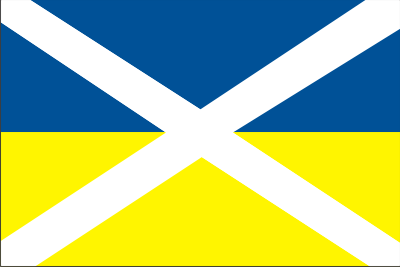History of the Canarian flag (V)
First independentis proposals
By the mid fifties, in Venezuela, Canarian inmigrants founded an organization named Movement for the Independence of the Canary Islands (MIC in Spanish), and probably not knowing the flag of the Ateneo and other previous proposals, designed a flag with two horizontal stripes, the upper blue and the lower yellow, and superposed a white Saint Andrew’s cross. It was, evidently, a combination of the two registry flags of the Canarian ports.
A quite similar flag, though it does not seem that it had any relation with the previous one, was designed by members of the self-proclaiming 'Independent Republic of the Atlantic' (RIA in Spanish), created at the beginning of the ‘60s by a group of students of the University of La Laguna. Though these did not become a politically organized group, they proposed independence as a political solution for the Canary Islands, and thus designed a flag that, like that of the MIC, was based on a combination of those of the two provinces: diagonally divided into four triangles, upper and lower blue with yellow laterals, and with a superposed white saltire and, in the center, a circle of seven red stars. This last colour may well have a revolutionary meaning, and the arrangement of the stars in a circle seems to represent the equality of all the islands, as the MPAIAC would later propose for its green stars; on the other hand, it does not seem that the members of the RIA had any knowledge of the flag of the Ateneo or any contact either with the Canarian Nationalist Party or the MIC.


